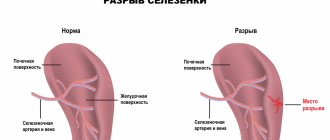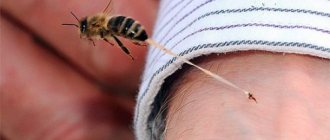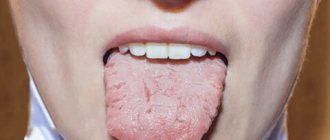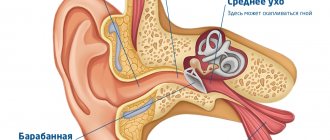A tongue burn is an injury that damages the mucous membrane, and in some cases even muscle tissue. This problem brings a lot of discomfort - from pain and the inability to eat or drink liquids to death. It is very important to urgently contact a specialist who, after studying the cause of the burn, will prescribe treatment. If you neglect the help of a qualified dentist, serious complications can occur, including necrotic decomposition of soft tissues and infection of the entire body.
Types of tongue burns
Depending on the cause of origin, the following types of injury are distinguished:
- Chemical burn of the tongue or oral cavity - when tissues are damaged as a result of exposure to aggressive chemical compounds;
- Thermal - when the surface was exposed to a high temperature object.
- Electrical - occurs as a result of tissue contact with electricity. For example, when performing dental procedures. Electric current affects not only the tissues of the tongue, but the entire body as a whole.
Types of glossitis
All inflammatory processes are divided into chronic and acute, independent and secondary, accompanying other diseases. In any case, problems with the tongue indicate the presence of a disease, so it is better to consult a doctor immediately. Sometimes glossitis occurs without pronounced manifestations, but the doctor will definitely notice changes in the tongue during a routine examination.
Independent diseases (when only the tongue is affected) include several types of inflammation.
Acute catarrhal glossitis
Most often it develops as a result of mechanical damage from sharp edges of decayed teeth, unsuccessful dentures, candies and nut shells. It is a sign of allergies, acute respiratory viral infections or gastrointestinal diseases.
Patients develop red spots on the base of the tongue. Patients experience pain while eating and talking. The tongue swells and becomes covered with a thick coating. Saliva production increases.
Desquamative glossitis
It has many names: geographic tongue, migrating, exfoliative glossitis. It is he who begins with red spots on the tongue. This occurs due to epithelial detachment (desquamation).
The reasons are not completely clear, but diseases play a certain role in the development of inflammation:
- stomach and intestines;
- edocrine glands;
- hematopoietic organs.
Infectious diseases can provoke inflammation
and
vitamin deficiency
.
All of them disrupt tissue nutrition and, as a result, the epithelium begins to slough off. The red spots are growing. As the spots increase in size, the process of keratinization begins in the center, and the keratinized areas, on the contrary, begin to flake off. This is how glossitis “migrates” from one part of the tongue to another. At the same time, its outline resembles a map, hence the name “geographical”.
In the vast majority, desquamative glossitis is discovered during routine examinations. For a long time it does not cause any inconvenience. But in advanced cases, the tongue begins to react to spices and sours. There are complaints of tingling and burning. The tongue becomes covered with cracks, which can become infected. In this case, the disease is accompanied by enlarged lymph nodes, general malaise, and weakness.
Diamond-shaped glossitis
This is an inflammation of the tongue in which red spots have clear boundaries
and
geometric shape
.
Among the reasons are:
- congenital nature of the disease;
- housing and communal services diseases;
- candidiasis of different nature and location.
There are 3 types
rhomboid inflammation. The flat look is the easiest, patients are unaware of it, and only a doctor can see the characteristic red spots on the root of the tongue.
The lumpy and papillomatous types are irritating with the sensation of a foreign body in the mouth. Sometimes patients complain of a burning sensation.
Black “hairy” tongue
With desquamative glossitis, the epithelium peels off too much. When the keratinized epithelial cells stop exfoliating at all, they speak of a “hairy tongue.” The size of the papillae increases. They change color as a result of the interaction of iron in food and oral microflora. Most often, the papillae become black or brown.
The reasons may be:
- gastritis;
- colitis;
- infections;
- tuberculosis;
- venereal diseases;
- smoking;
- alcoholic drinks in excessive quantities.
The disease develops gradually and for a long time patients do not pay attention to the changes. Therefore, the sight of a “hairy” tongue can cause a lot of stress. Patients complain of burning, itching, dryness, and foreign body sensation. Sometimes, when talking, gagging occurs. Taste sensations often change.
Folded tongue
This congenital anomaly is detected in children and adults. It is diagnosed less often in children due to the fact that the folds are small. During the period of intensive growth, in puberty, with the growth of muscle tissue, the tongue also increases, the folds appear more clearly. Characterized by changes in the shape and size of the tongue. The transverse folds are smaller, the longitudinal folds are well defined. The main problem of pathology is the accumulation of food debris and bacterial waste products in the folds. This is a favorable environment for microorganisms. They penetrate small cracks and provoke the development of other forms of glossitis. In particular, in 50% of cases, a folded tongue is combined with migrating glossitis. Often inflammation is caused by fungal infections, such as candidiasis.
There is no specific treatment. In the presence of a fungal infection, drugs with a fungicidal effect and ointments against the fungus are prescribed. It is recommended to carefully observe oral hygiene and, along with brushing your teeth, clean your tongue with special scrapers.
Glossodynia
Glossodynia
is a burning mouth syndrome. It usually starts with the appearance of red spots on the tip of the tongue. The tongue is sore and tingling. Pain appears, which subsides while eating, but intensifies in the evening. In 80% of patients, saliva production decreases. The tongue swells, desquamation (detachment of the epithelium) begins. The tongue becomes covered with cracks.
Symptoms of a tongue burn
Symptoms depend on the extent of soft tissue damage:
First degree - a burn occurs due to short-term exposure to high temperature tissue. The patient experiences slight redness and swelling of the mucous membrane. Often, a burn condition is provoked by consuming too hot food or liquid.
Second degree – swelling of the mucous membrane, redness, and multiple blisters on the surface are observed.
Third degree - accompanied by tissue death, large blisters, redness of the surface, the organ itself seems to “change its consistency.” As a rule, it occurs due to exposure to gases, liquids at elevated temperatures, or chemical compounds.
The fourth degree is a severe lesion when the tissues are charred. This burn condition is rarely compatible with life.
The mechanism of formation of a blood bubble on the oral mucosa
Bloody blisters in the mouth in most cases are not life-threatening. They are formed as a result of mechanical damage to the mucous membrane. When microtrauma occurs, harmful microorganisms attack the damaged area.
After this, a number of responses are activated in the human body:
- The immune system is activated. Monocytes and leukocytes, as well as macrophages, instantly arrive at the damaged area, attacking the harmful pathogen and quickly destroying it.
- Immune cells die. This is a signal for other cells and substances are released in the affected area that are mediators of inflammation of the mucous membrane - serotonin, histamine and bradykinin.
- These substances cause a strong spasm of the circulatory system and the outflow of blood is hampered. After the spasm is relieved, all accumulated blood immediately flows to the site of inflammation. It moves at high speed and under pressure. A detachment of the mucous membrane occurs in the mouth, and a bloody blister appears.
How to properly treat a tongue burn?
Treatment methods depend on the type of thermal injury.
What to do in case of a thermal burn of the tongue?
- rinse your mouth with cool water;
- apply ice or a cold object to the damaged area;
- treat the burn site with a disinfectant solution;
- rinse with a disinfectant to prevent bacteria from entering the oral cavity;
- use local anesthetic compounds;
- while the tongue is recovering, eat liquids, fruits and vegetables rich in vitamins C and B. Avoid spicy, pickled foods, foods that can have a mechanical effect on tissue (nuts, crackers, seeds, etc.).
- rinse the mouth thoroughly;
- neutralize aggressive chemicals. Depending on the source of the burn, a specific neutralizer is used;
- After neutralization, the burning sensation should go away. For pain relief, it is worth using anesthetics and antihistamines;
- if the mucous membrane is severely burned, with damage to the structure of the tongue and muscle tissue, it is necessary to urgently go for an examination to a doctor.
If there are bubbles on the surface of the tongue, you should urgently seek help from a dentist! Under no circumstances should you open blisters yourself! You may need hospital treatment under the supervision of a doctor.
How to treat a chemical burn of the tongue?
Note! If the oral cavity is burned with an alkaline solution, it cannot be rinsed with water, since moisture promotes more active penetration into the soft tissues of the tongue.
What are the symptoms of a hot burn?
If a person misjudges, for example, the temperature of a drink and takes a sip, he can get a thermal burn. Symptoms will depend on the degree of which there are. Clinical recommendations for providing medical care to victims of thermal injury in emergencies are three:
- The first is that only the upper layer of tissues of the tongue and mouth is damaged, redness and swelling appear, and the affected area begins to ache and burn.
- The second is a more serious condition, the burn leads to blisters and serious pain.
- Third degree - the deep tissues of the tongue are affected, it may char, turn white or burn. This is accompanied by numbness and very severe pain.
Regardless of the degree of burn, the taste buds are damaged. Therefore, a person may lose his sense of taste.
How exactly to neutralize a chemical burn in the mouth?
Carbolic acid is well neutralized by glycerol.
Baking soda and water neutralize acidic compounds.
If alkali gets into your mouth, rinse the cavity with citric acid diluted in water.
If exposed to aggressive household chemicals, the mouth should be rinsed with cool running water.
It is important! Tongue burns take a long time to heal. Unfortunately, these tissues cannot be made motionless for a certain time; the tongue is constantly in motion. On average, it can take several weeks for the tongue to recover from injury.
Preventive actions
Most often, such injuries occur in people who are used to eating on the go or eating overly spicy foods. To prevent tongue burns, you need to follow dietary rules and carefully monitor what is in a glass or plate - people often confuse bottles with water and toxic household substances.
When adding spices to dishes, you should know when to stop. Some people like the burning taste of food, but we must remember that burns also remain in the stomach, which in the future provoke the development of gastritis and more dangerous diseases.
Adults should monitor children, because they do not realize the danger of a particular situation and can drink boiling water or eat any toxic substance that comes to hand. Children should be prevented from using electrical appliances.
When undergoing a course of radiation therapy, you must carefully monitor your well-being and, if you suspect a burn, consult a doctor. When carrying out the procedure, you must strictly follow the rules communicated by the doctor.
A tongue burn can be a completely harmless injury, but sometimes such injuries lead to serious consequences. Those who have burned their tongue with boiling water can relieve the pain at home. But if the soft tissues of the oral cavity are seriously damaged by electric current, chemicals and radiation, you need to urgently call an ambulance.
Treatment of a burn to the oral cavity in a child
According to statistics, a large percentage of patients who turn to a doctor for help as a result of a burn to the mouth or tongue are children. Young patients up to a year and older can unknowingly “taste” household chemicals or alcoholic drinks accidentally left on the table by their parents. Also common causes of burns are eating too hot food.
The mucous membrane of a child’s tongue is more delicate and thin, and therefore requires more delicate handling in case of a burn. For treatment, you must urgently contact a pediatric dentist.
What are the signs of a chemical burn?
Most often, people encounter Federal clinical recommendations “Toxic effects of corrosive substances”, “Toxic effects of soaps and detergents” with exposure to acids or alkalis, sometimes concentrated detergents, which contain strong irritating components. For example, acetic acid or essence, ammonia, and hydrogen peroxide are dangerous.
After they get inside, the mucous membrane of the mouth, esophagus, and respiratory tract is damaged, and signs of poisoning appear due to the absorption of chemical ions. Federal clinical recommendations “Toxic effects of corrosive substances”, “Toxic effects of soaps and detergents” may include the following symptoms:
- pain and burning in the tongue, palate, throat, chest and abdomen;
- a crust on the mucous membrane that forms during acid burns;
- swelling of the oral tissues, they become swollen and loose, disintegrate when burned by alkalis;
- vomiting Detergent poisoning / US National Library of Medicine, diarrhea, sometimes with blood;
- labored breathing;
- headache;
- loss of consciousness;
- drop in blood pressure;
- heart rhythm disturbance.
If the victim is not taken to a doctor in time, the person may die due to liver and kidney damage.
Severity
Based on the scale and depth of the violation of the integrity of the mucous membrane of the tongue, burn degrees of damage are distinguished:
- First . It is characterized by a minor disturbance, accompanied by mild swelling and redness. It is necessary to rinse the mouth with an antiseptic.
- Second . The average form of disorders is characterized by the appearance of transparent bubbles. You should contact a burn surgeon to prescribe therapy.
- Third . The degree is characterized by severe disorders with the formation of ulcers, even tissue necrosis is possible. A mandatory consultation with a combustiologist is required to prescribe a therapeutic course in combination with painkillers.
- Fourth . The most severe form of injury that is not life-threatening. As a result, partial or complete charring of the tongue as a whole.
What complications can there be?
In cases of untimely assistance after a burn and lack of treatment, infections can occur on the injured tongue, leading to an inflammation process - glossitis.
If the burn is severe and the area of damage is large, then taste buds and sensitivity may be impaired in the future, not only during therapy, but also after healing.
Trauma to the oral cavity is characterized by decreased appetite, its absence or inability to eat. This leads to exhaustion, disruption of the digestive system, aggression and insomnia.
Prevention and general recommendations
It takes a long time to restore the functions of the tongue after injury. Therefore, in order to speed up the regeneration process, it is necessary to follow certain recommendations:
- make lotions from medicinal oils (fish, rosehip, Retinol, Carolin);
- exclude sour, spicy and salty foods, tropical fruits, citrus fruits, and solid foods from the diet;
- regularly rinse your mouth with antiseptics;
- maintain normal oral hygiene;
- disturb the tongue as little as possible.
To reduce the risk of injury to a minimum, you should:
- control the availability of chemical-containing substances (acid, alkali, household chemicals);
- do not take hot food and liquids;
- limit access to electrical appliances that may cause harm.
According to statistics, most tongue burns are domestic injuries. If the lesion is not severe, they can be treated at home. For more serious burns, you should seek help from a doctor and do not self-medicate.










